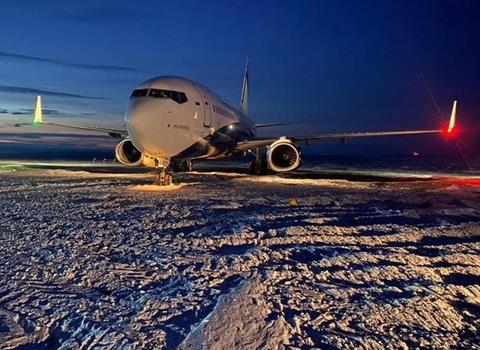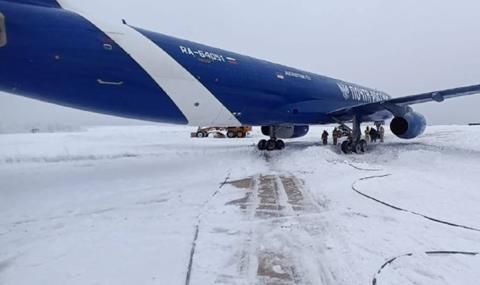Russian authorities have alerted carriers again to the risks of runway excursion during winter, after three incidents in the first half of January alone brought to six the number of occurrences in the space of three months.
Investigators have disclosed that a NordStar Boeing 737-800 crew activated maximum reverse thrust upon touchdown on runway 19 at Norilsk on 9 January.
As the aircraft, arriving from Krasnoyarsk, slowed to 80kt the crew disengaged the thrust-reversers and then applied pedal braking at 54kt.
“The aircraft crew determined that pedal braking was insufficiently effective and re-engaged reverse [thrust],” says federal air transport regulator Rosaviatsia.
But the jet entered an “uncontrolled” turn, it adds, spinning 180° and skidding off the runway before coming to a half 29m from the exit.
Weather conditions included a 19kt crosswind from the left. None of the 169 passengers and eight crew members was injured.

Three days later, on 12 January, a chartered Arktika Yakovlev Yak-42D trijet – with 54 passengers and five crew – conducted a low-visibility approach to Arkhangelsk.
According to its captain, visual contact with the runway lights was lost just before landing as a result of ground fog, but the crew proceeded with the touchdown, after which the aircraft rolled off the left side of the runway.
This was followed, another three days later, by an incident at Mirny when an Aviastar-Tu Tupolev Tu-204 freighter, operating from Moscow Vnukovo for the Russian postal service with five crew, landed on runway 25 and rolled off the end, onto a safety strip. Weather conditions indicate a 5kt tailwind and snow, with a runway friction coefficient of 0.3.

Rosaviatsia states that, since mid-October, three other aircraft have experienced similar excursions – an Antonov An-24 at Utrenny, a 737-800 at Perm, and a Yak-40 at Ossora.
It points out that, last year, it issued two flight-safety bulletins regarding aircraft suffering runway excursions while operating transport services.
Rosaviatsia has reiterated the typical circumstances in which such incidents occur – including runway contamination, unstable approaches, unfavourable winds, poor visibility and improper use of braking and reverse thrust – and urged stricter compliance from crews, including the execution of go-arounds if necessary.


























